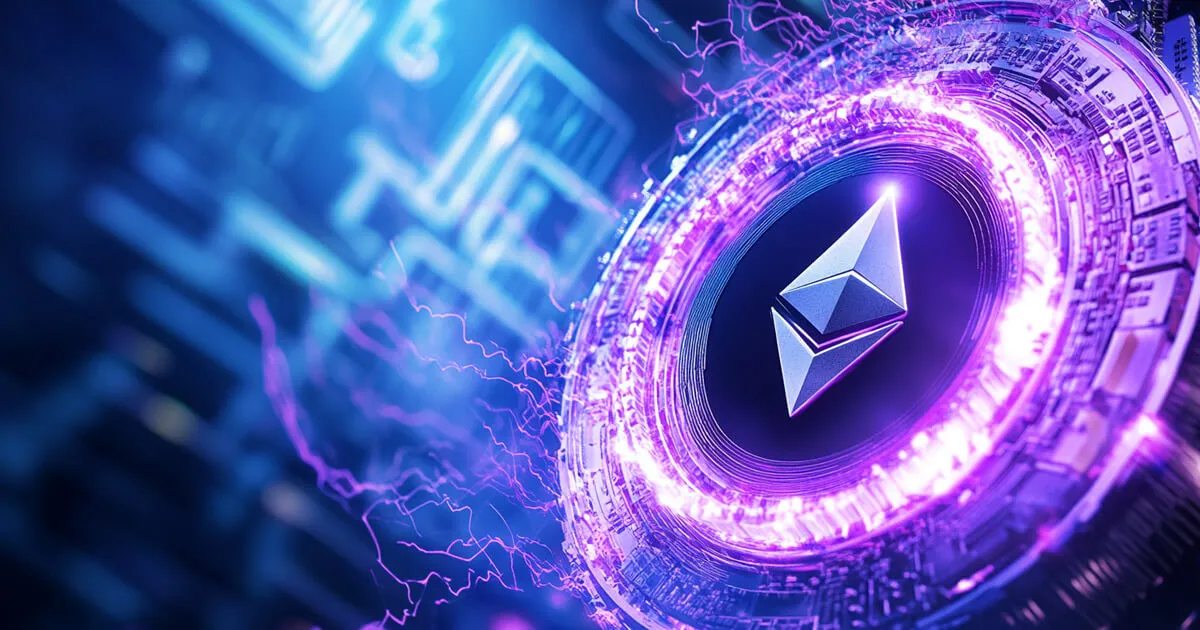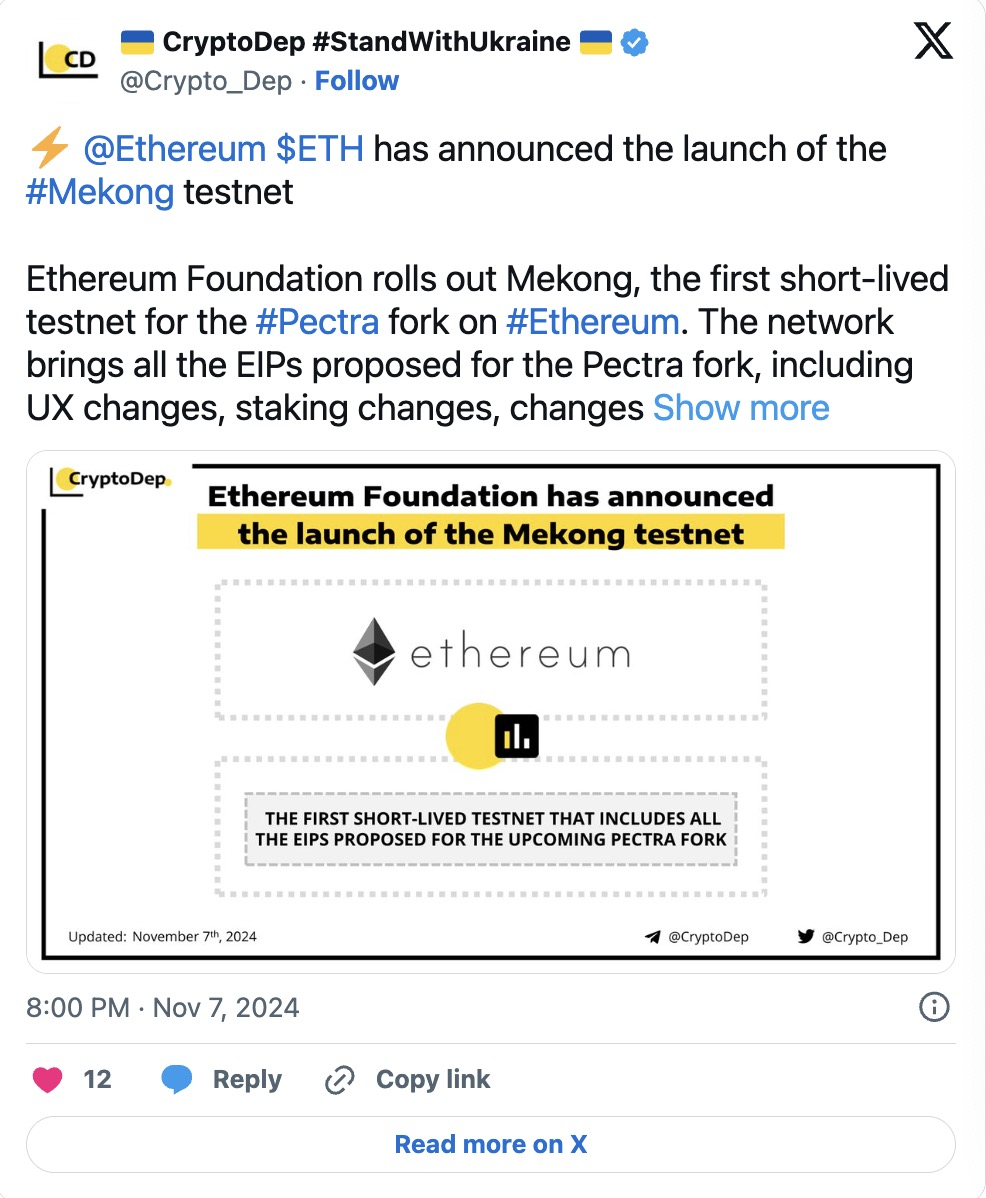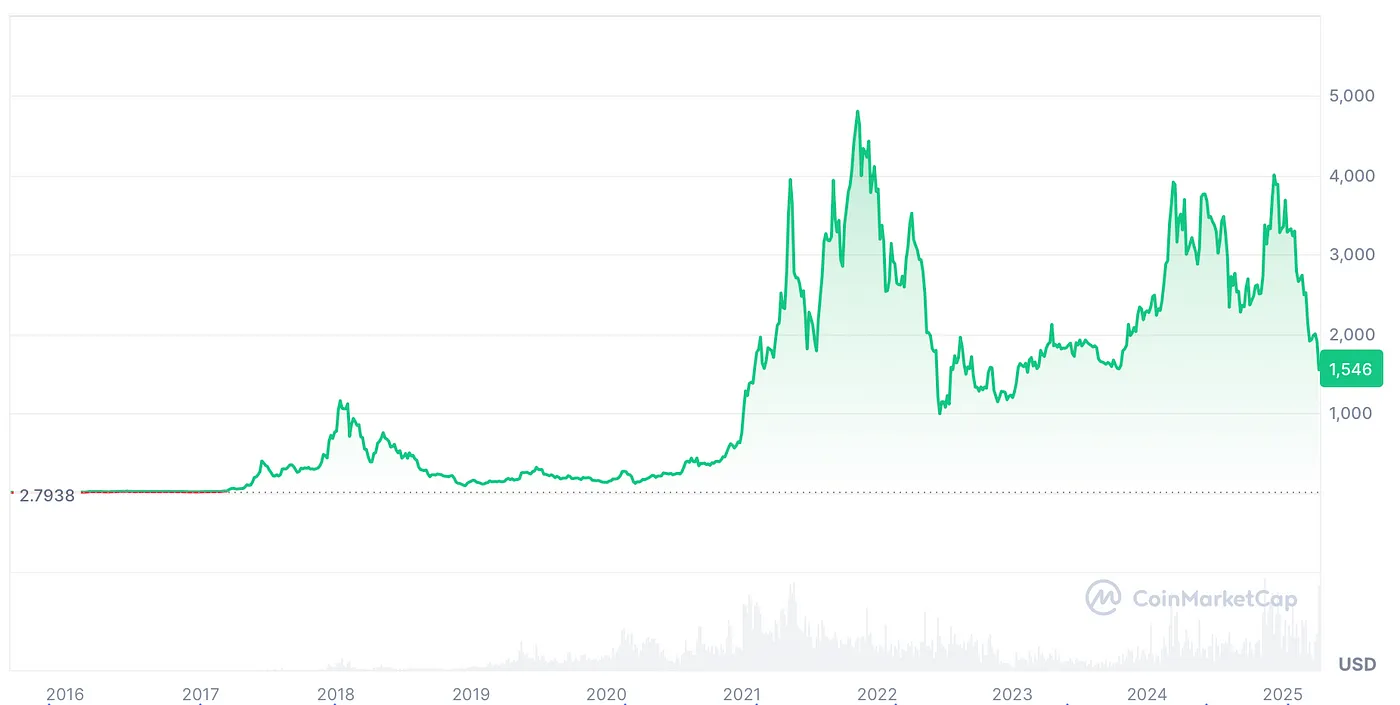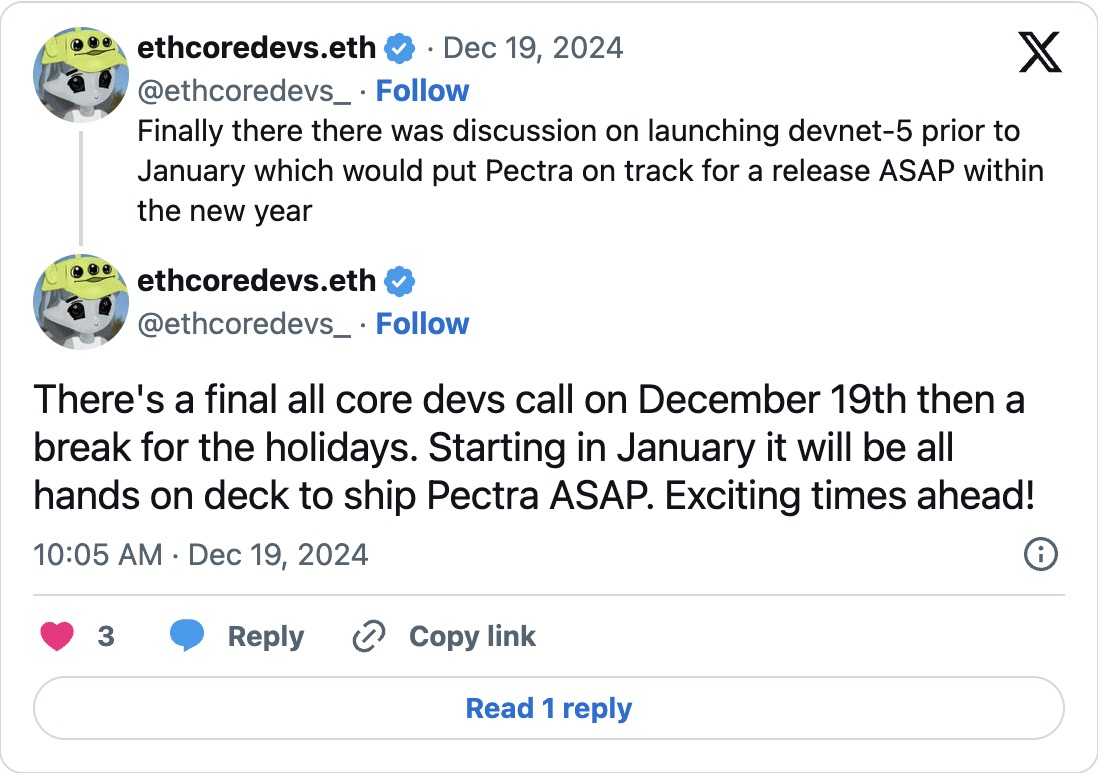By Mark Dewolf
Compiled by: Vernacular Blockchain

Ethereum (ETH) may be gearing up for a resurgence after a 45% price drop in the first quarter. On May 7, the much-anticipated Pectra upgrade is expected to pass final testing, paving the way for the mainnet launch.
The network upgrade was formed by merging two improvement packages, Prague and Electra, collectively known as Pectra, and contains nine Ethereum Improvement Proposals (EIPs). The changes are designed to simplify the onboarding process for new retail traders while making the world’s second-largest blockchain more attractive to institutions.
Pectra increases the validator staking limit from 32 ETH to 2048 ETH, reducing the need to run multiple validator nodes. By simplifying the staking process, Ethereum managers hope to achieve stronger liquidity lock-in and even promote the flow of funds for large users.
If the user experience (UX) improves and large investors can participate more easily, on-chain activity should increase significantly - which is what they expect. Ethereum price action after the Pectra upgrade will be a key indicator for the crypto market in Q2. Let's take a look at what's behind it.
What is the Ethereum Pectra Upgrade?
Pectra is an upgrade to the Ethereum blockchain that aims to increase staking efficiency, improve user experience, continue to advance the Rollup-centric expansion roadmap, and enhance Ethereum's decentralized nature.

Prior to the merger, Prague focused on improvements to Ethereum’s execution layer, while Electra focused on upgrades to the consensus layer.
The Pectra upgrade has been highly anticipated for months, and now has an official launch date: May 7, 2025. If all goes according to plan, it will be the largest update to Ethereum ever.
Pectra's main proposal
As of March 2025, the Pectra upgrade includes the following nine EIPs:
- EIP-2537: Added precompilation, providing 120+ bits of security operations, which is higher than the 80 bits of security of the existing BN254 precompilation.
- EIP-2935: Save historical block hashes to support stateless clients.
- EIP-6110: Provide validator deposits on-chain.
- EIP-7002: A new mechanism that allows validators to trigger withdrawals and exits through execution layer withdrawal certificates.
- EIP-7251: Increases the maximum staking limit for Ethereum validators from 32 ETH to 2048 ETH.
- EIP-7549: Provides additional data availability for Ethereum Layer 2 (L2).
- EIP-7685: A framework that allows validator smart contracts to perform specific actions.
- EIP-7702: Improved experience for external account (EOA) users.
- EIP-7742: Decouple blob counts at the consensus layer and execution layer.
Among them, EIP-6110, EIP-7002, EIP-7251, EIP-7549 and EIP-7742 will be applied to Ethereum's consensus layer; while EIP-2537, EIP-2935, EIP-6110, EIP-7685, EIP-7002, EIP-7702 and EIP-7742 will change Ethereum's execution layer.
Key features of Pectra
More efficient staking
Ethereum currently limits the stake size of a single validator to 32 ETH. For larger transactions, this limit requires the transaction entity to run a large number of validator nodes.
With the introduction of EIP-7251, the maximum staking limit for each validator node will be increased from 32 ETH to 2048 ETH. However, the minimum validator staking threshold remains at 32 ETH to not hinder individual staking.
The increase in the maximum stake limit will allow large validators to consolidate and run fewer nodes, thereby reducing the number of peer-to-peer messages and digital signatures.
Small validators can still increase their stake, instead of accumulating in multiples of 32 ETH to run multiple validator nodes.
As of December 2, 2024, Ethereum has over 1.07 million daily active validators. A large number of validators can result in high computational and bandwidth load on the network.
User experience improvements
The Pectra upgrade includes multiple EIPs aimed at improving the user experience for Ethereum users and developers.
EIP-7702 will introduce a new transaction type that allows multiple operations by the same user to be completed in one transaction. The upgrade will also allow an account to sponsor gas fees for another account. We have previously discussed this "gas abstraction".
"Permission downgrade" is a new feature introduced by EIP-7702 that allows users to authorize spending that meets the conditions. For example, authorizing the spending of a specific type of ERC-20Token, or spending 2% of the total balance every day.
EIP-2537 will also introduce new features used in zero-knowledge cryptography, while EIP-7002 will make the Ethereum staking pool experience more trustless by introducing a mechanism for smart contracts to trigger validator exits.
Improved Rollup Scaling
The Pectra upgrade builds on the data blobs introduced by the original Danksharding and significantly reduces Ethereum Layer 2 (L2) gas fees.
EIP-7594 will introduce a new protocol called PeerDAS that allows nodes to verify the availability of L2 Blob data by downloading only part of the data.
How might Pectra affect the value of ETH?
In a research note published last October, Galaxy vice president of research Christine Kim wrote that as Ethereum advances its Rollup-centric scaling roadmap, the impact of mainnet (L1) protocol upgrades on ETH’s value will gradually diminish.
She added that upgrades on Layer 2 (L2) could have the biggest impact on ETH’s value, as Ethereum’s revenue could be driven primarily by user activity on L2 in the future.

From $3 to $4,000 and back: Ethereum price history as of April 6, 2025. Source: CoinMarketCap
Christine Kim pointed out: “Driving upgrades in user experience, interoperability, decentralization, and security on L2 is more important to the value of Ethereum than optimization and improvement of the base layer.”
summary
Ethereum’s Rollup-centric scaling plans have divided analysts, and uncertainty surrounding them may have impacted market valuations over the past year.

However, network upgrades like the original Danksharding and Pectra show a high level of planning and effort. Ethereum — the backbone of decentralized applications (dApps), decentralized finance (DeFi), and many parts of the modern crypto market — will undoubtedly benefit from greater efficiency and flexibility.











